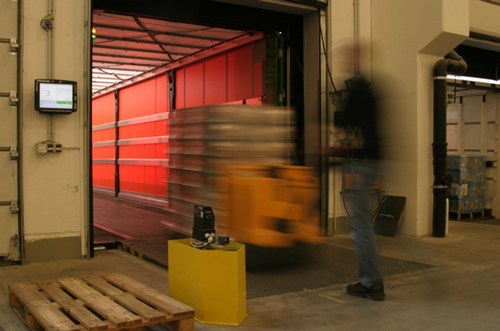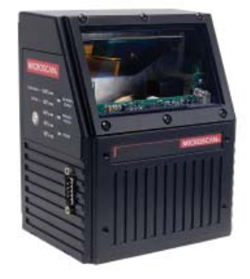Without proper pallet tracking, manufacturers run the risk of costly product recalls, as well as negative impact on brand image. Often entire batches of affected product must be recalled due to insufficient pallet identification, even when errors exist for only a portion of a given shipment.
Contributed by | Microscan
Precision data tracking for delivered goods is critical in the food & beverage sector where product quality and consumer safety are paramount to a company’s profitability and reputation. Manual data tracking, be it with a paper & pen or handheld scanners, is inefficient and leaves room for human error that may result in lost or unsafe product. Automation solutions, like industrial barcode scanners, offer reliable data tracking methods for preventing these errors and ensuring product traceability throughout food & beverage logistics.
CASE STUDY
The riha Group offers a comprehensive range of alcohol-free drinks – from fruit juices to premium mineral water. In addition to its three local branches in Germany, the group also has international plants in Switzerland, Spain, Costa Rica, and Poland. Their product line covers five globally-marketed private label brands, filling services, and a number of trading brands. Because of the variety of brands and forms of packaging being shipped, strict requirements for tracking pallet data within their international distribution network must exist to identify and trace all products from point A to B.
Without proper pallet tracking, manufacturers run the risk of costly product recalls, as well as negative impact on brand image. Often entire batches of affected product must be recalled due to insufficient pallet identification, even when errors exist for only a portion of a given shipment. Manual documentation of pallet data on outgoing delivery notes is neither comprehensive nor practical enough for a company like the riha Group – too many pallets must be tracked at once and the distribution network is too complex. At some companies, additional staff may be hired to manually compare pallets and delivery notes using handheld scanners to compensate for the increased data collection needs. However, with today’s international delivery standards, it is no longer a simple matter of loading a truck with the correct products. Instead, companies must be able to track specific information for each pallet, including pallet types and unique product data (such as SSCC, batch, best-before date codes). These strict requirements result in longer loading times and, ultimately, more money spent on employee work hours.
System Requirements
Artschwager & Kohl Software GmbH had already introduced its LOMAS® logistics management system throughout the riha Group. However, the company still needed a data tracking solution to relieve its loading staff of the manual tracking process, shorten loading times, and let the truck drivers work as independently as possible. To meet the Group’s need for both high efficiency and accuracy, Artschwager & Kohl developed a concept for automatic pallet recording that could be easily integrated into LOMAS® without further modifications to the system as a whole. Adding an industrial barcode scanner to the tracking process would both meet the project’s specifications and maintain modularity within the system. The difficulty in implementing this concept, however, was finding a conventional scanner that met the company’s requirements for high scan performance and reliability. The scanner also needed to be integrated directly into the application via TCP/IP.
In conjunction with the technical staff of the riha Group and Microscan’s strategic partner in Germany, WISYSTEME GmbH, Artschwager & Kohl found what they needed: the MS-890 industrial raster scanner from Microscan met all requirements perfectly. The MS-890’s ease of use, multitude of scan settings, and configurability to the customer’s loading ramp specifications made it the ideal candidate for their pallet tracking system. The read quality of the MS-890 scanner can be assessed objectively with the help of the integrated diagnosis interface and it can also, as an option, be equipped with a trigger light beam and power relay to control output indicated by a stack light. Finally, the scanner can be calibrated to a read distance of 60 to 200 cm using its sweeping raster, allowing it to read multiple codes at once and accounting for variation in code placement on pallets and the unique load procedure of each driver.

Solution Implementation
The riha Group’s loading gates were each equipped with an MS-890 scanner, which is connected to the LOMAS® logistics management system via TCP/IP. When a shipment is activated, pallets are booked onto a shipment delivery note. As they are scanned at the loading gate, pallets are compared to the shipment delivery note by the LOMAS® logistics management system where information on each product, such as shelf life and date/lot codes, is checked. Thanks to the data tracking system’s modularity, pallets can continue to be booked at the same time using handheld scanners to scan the delivery note.
The data tracking process is automatic for goods receipt, dispatch and return, saving both time and manual labor. The MS-890 scanner reads continuously once loading starts, using its sweeping raster laser to read pallet labels within a wide scan area. This allows several different pallets, such as pallets half the standard Euro-pallet size, to be reliably tracked, even when the fork is moving quickly. From a software user interface, the loading staff can stay up to date on the current status of each shipment as it is being filled. A stack light also shows the truck driver if a pallet contains the correct product for each shipment: a green light means that the scanned pallet was booked for the shipment while a red light means that the pallet is not correct for that shipment.
Results
Before Artschwager & Kohl’s pallet tracking system was introduced across the riha Group, it had to prove its effectiveness during a three-month test phase at their Öhringen, Germany plant. This performance test resulted in virtually 100% precise data tracking for pallets that passed through the loading gate scanner. The system was positively received by the Group’s truck drivers for its ability increase speed and efficiency in the loading process and has performed reliably since its implementation. This system is now used in all of the riha Group’s plants throughout Europe.

MS-890 Industrial Raster Laser Scanner
Founded in 1982, Microscan has a strong history of technology innovation which includes the invention of the first laser diode barcode scanner and the 2D symbology, Data Matrix. Today, Microscan remains a technology leader in automatic identification and machine vision with extensive solutions for ID tracking, traceability and inspection.
Microscan focuses on technologies of automatic identification (auto ID), machine vision, and illumination with application solutions ranging from basic barcode reading up to complex machine vision inspection, gauging, and measurement. Our solutions help manufacturers around the world drive down cost and waste, automate critical manufacturing processes, and increase yields.
The content & opinions in this article are the author’s and do not necessarily represent the views of RoboticsTomorrow
Comments (0)
This post does not have any comments. Be the first to leave a comment below.
Featured Product



